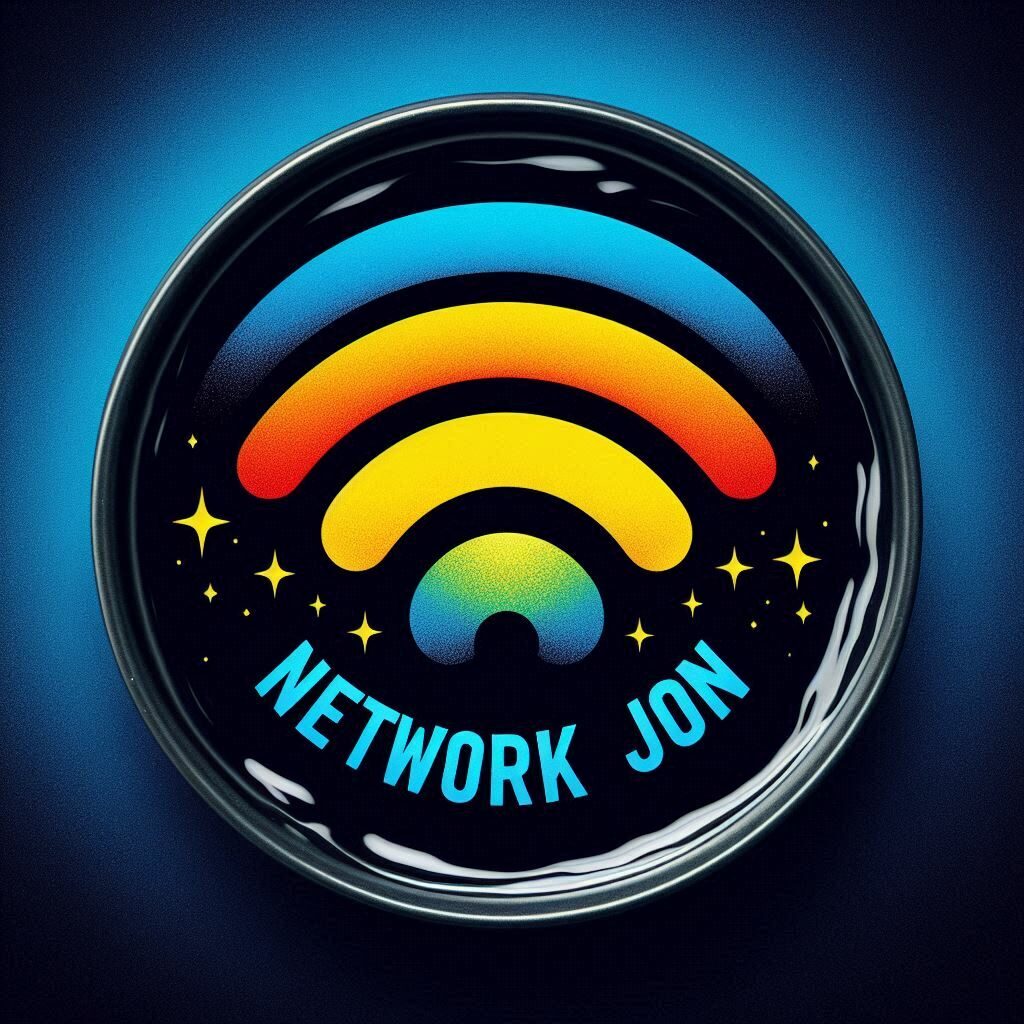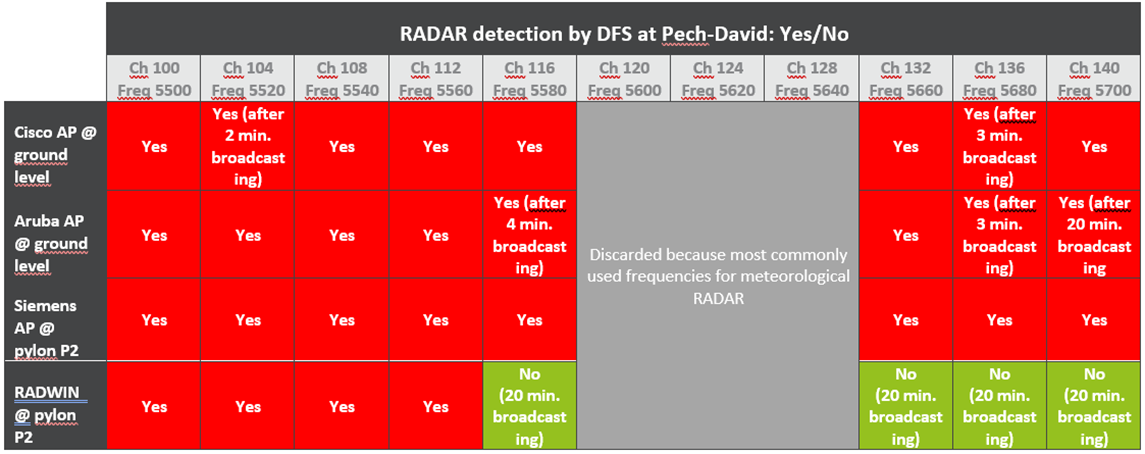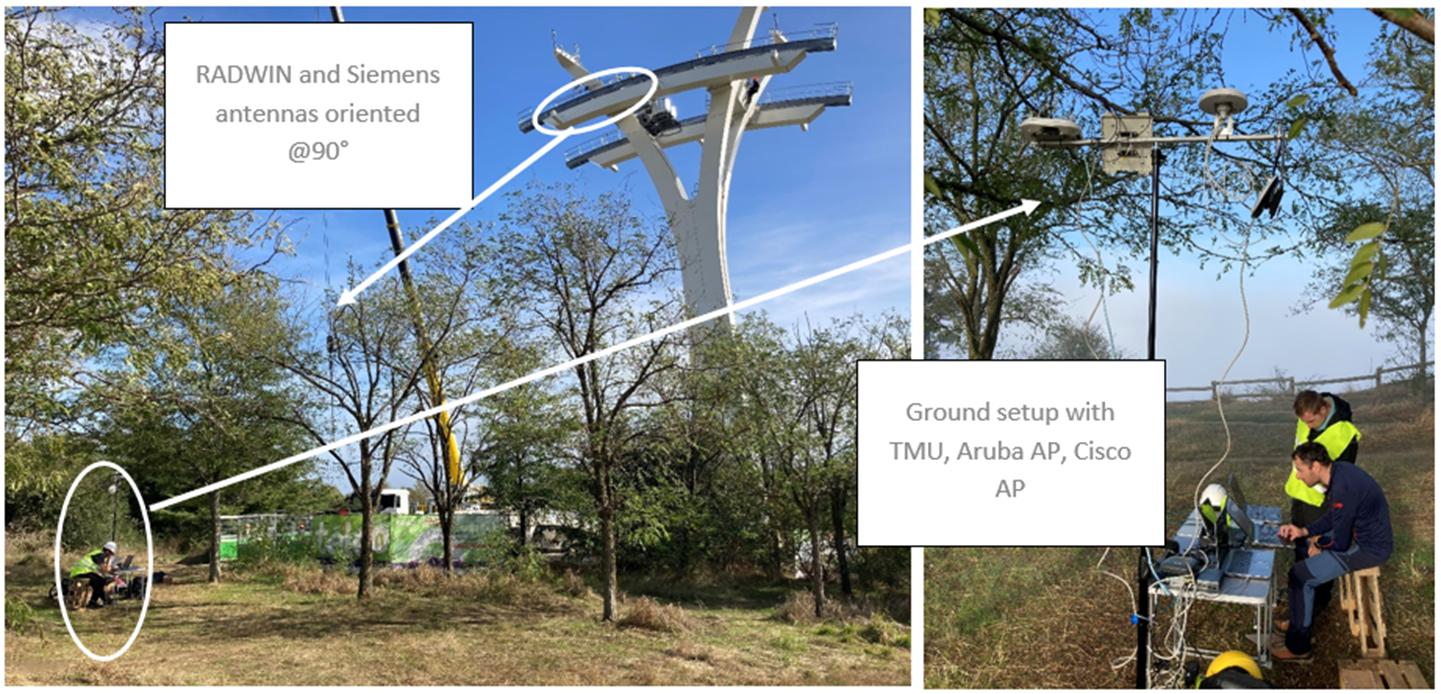Back in 2020, a brand-new chunk of license-free spectrum in the 6GHz band was opened up for our Wi-Fi networks to use. Unfortunately, this band is not harmonized worldwide, and only some parts of the world have access to the entire 1200 MHz of spectrum. You can check the current state of regulations here: https://www.wi-fi.org/regulations-enabling-6-ghz-wi-fi
Note: This blog post won’t go into the technical details of this new band because I would like to present a few uses cases I came accross during my work where having more spectrum would be GREAT. So if you don’t know what 6GHz is about or you need a refresh, you should first check these:
- For the French audience, I made a 6GHz presentation in 2022 during an event we held for customers and partners. You may find the recording here: https://youtu.be/66TKpDgc_As?t=4112
- For the English audience, I suggest Keith Parsons‘ video: https://www.youtube.com/watch?v=yPlY-Q5lS2A
The motivation for this blog post comes from WLPC Prague 2024 where I heard about Dobias Van Ingen‘s mission to gather use cases and advocate for the opening of the entire band for us in Europe. So thank you Dobias and here we go.
#1 – Urban cable car for public transportation in Toulouse and issues with nearby weather RADAR
In 2019, I worked on an urban cable car project for the city of Toulouse in France. The objective was to design and test a wireless solution to enable communication between the cable car cabins and the stations on the ground. Communication is needed for several systems inside the cabin: CCTV, passenger information screen, emergency phone and PLC communication to check the status of the cabin. Because of public transport regulations, availability of the wireless solution was paramount. And this is where things got complicated. The cable car goes up a hill that overlooks the city so designing using license-free spectrum is challenging as you can pick up interferences easily. The cable car also operates in dense urban areas (it goes through the city, a hospital campus and a university campus) where many neighboring Wi-Fi networks are being used. Finally, the main issue for this deployment was the fact that Meteo France, the national meteorological administration in France, has a major site in Toulouse. And their site is only a few kilometers away from the cable car and within direct line of sight in most of the cable car path. And, of course, Meteo France operates weather RADAR systems in this location because they can cover a strategic part of the country for weather forecast.
You can probably see where this is going. Below you can see some of the DFS detection tests I conducted using 4 different access points from 4 different vendors.
The situation was bad and access points were triggering DFS events in the majority of the cable car path. RADWIN devices seemed less sensitive to DFS than other vendors… but use at your own risk I guess…
As a result of these tests, it was very likely that a wireless infrastructure running on the 5GHz band could not meet the availability requirements of the project. I advised against using a solution on the 5GHz band and suggested we look for another solution like a private LTE infrastructure.
This is a typical use case where having access to 6GHz spectrum outdoors (which we don’t have in Europe… yet) means we would have been able to provide a solution using license-free spectrum. And I have designed and troubleshooted a few other cable cars wireless infrastructures where additional spectrum and no DFS constraints would allow the wireless network to work much more smoothly.
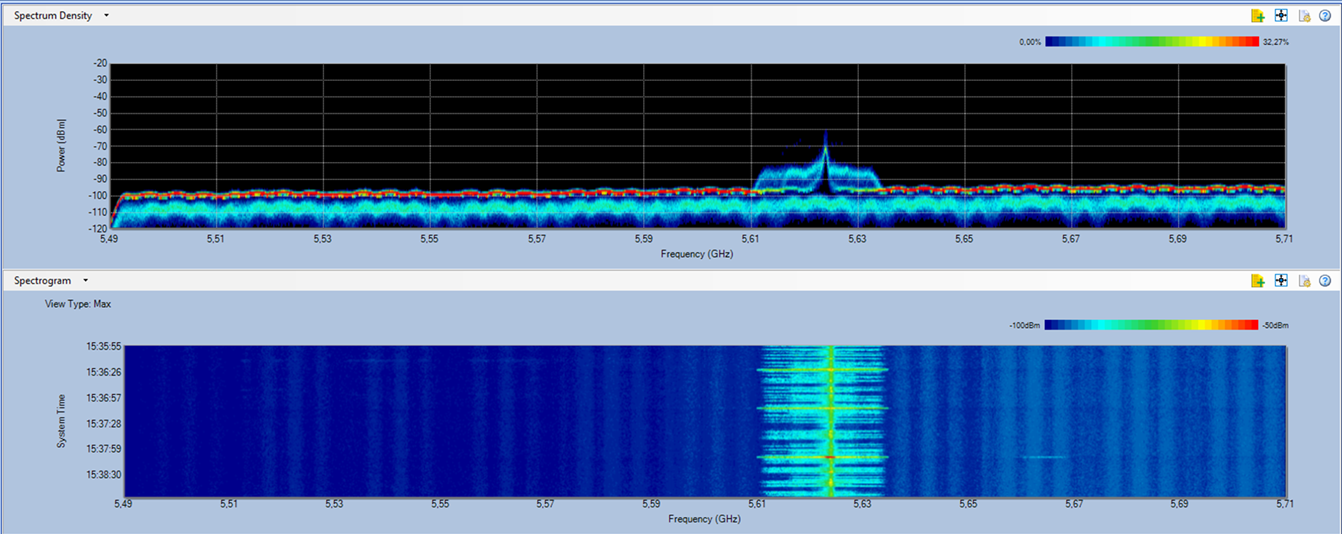
#2 – Wideband interferences at a particle accelerator
I recently worked on a Wi-Fi redesign for a large particle accelerator. It was one of the most challenging environments I ever encountered. The ring where the electrons are accelerated is built inside one very large building called the experimental hall. There are high ceilings and a lot of metal. Co-Channel Interference is very hard to avoid so additional 6 GHz channels would solve problems there.
Another challenging aspect of this environment is the accelerator uses RF hardware to accelerate particles (don’t ask me how this works!). And these RF systems use very high level of powers. Even though they are very well shielded and only a fraction of the power leaks, this situation is still causing massive interferences in two places around the ring. You will see below that 5 and 6 GHz bands are strongly affected by these interferences. However, as you go higher in frequency, interference tends to decrease. In the last screenshot below, the higher part of the 6 GHz band appears noisy but is much better that the 5 GHz band and could potentially be useful. Unfortunately, because we don’t have access to the channels in the upper part of the spectrum in Europe, I cannot use these channels. Fun fact (or not), users in these areas must rely on the 2.4 GHz band: yes, it is much cleaner and actually provides a better connectivity and experience than 5 GHz and lower 6 GHz bands.
- 2.4GHz band:
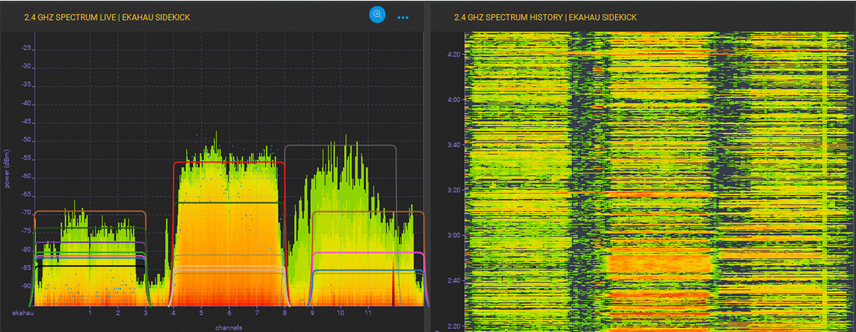
- 5GHz band:
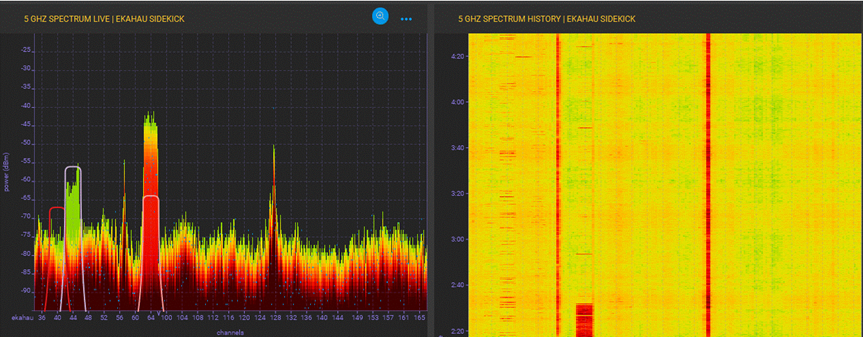
- 6GHz band (entire band from 5.9 to 7.1 GHz):
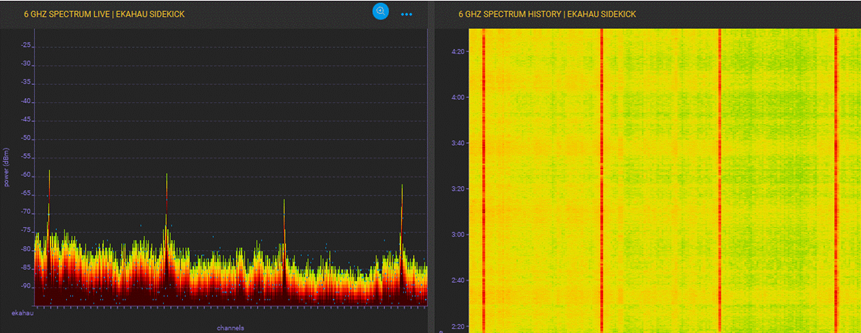
#3 – Tertiary building with offices and classrooms
Overall, most Wi-Fi infrastructures we design today would benefit from additional spectrum in the 6 GHz band. As an example, I recently designed and deployed a fairly high density Wi-Fi infrastructure for an 8-storey building in Lyon. The Wi-Fi infrastructure is key because this building hosts classrooms, press-conference rooms, meeting rooms and a few offices. Most of the users in this building are actually visitors so the majority of them rely on Wi-Fi (apart from a couple of offices floors where Ethernet is available).
The data I am presenting here is coming from a post-validation survey of the entire building. This means no simulations – only actual measurements. As you will see below, Co-Channel Interference exist in the 6GHz band and it could very well be avoided if we had access to additional spectrum.
Below are CCI heatmaps on 5GHz and 6GHz bands for a few relevant floors. CCI is displayed as ‘Primary associated channel’ with a threshold of -80dBm. So this should be close to what an actual user will experience even though we could argue on the fact that CCI exists down to -85dBm (and even a bit lower). We wanted to try 40MHz-wide channels on the 6GHz band for this deployment for added capacity and throughputs. Also, since clients tend to prefer larger channels, this could be a way to steer more clients to use the new 6GHz band.
Here is the actual channel plan being used for this building at the time of survey:
- 5GHz – 16x 20MHz channels: 36, 40, 44, 48, 52, 56, 60, 64, 100, 104, 108, 112, 116, 132, 136, 140
- 120-124-128 are excluded because of DFS and 10-minutes CAC requirements.
- 144 is excluded because of potential limited support on some clients.
- 149-153-157-161-165 are excluded because of SRD power limitations and potential limited support on some clients.
- 6GHz – 12x 40MHz channels: 5, 13, 21, 29, 37, 45, 53, 61, 69, 77, 85, 93
This is a Cisco deployment so Cisco RRM is doing the channel assignment. Transmit powers are also automatically managed by RRM with custom min/max values of 11/17 dBm on 5GHz and 6GHz.
The heatmaps show that CCI is more important in the 6GHz band than the 5GHz band. This makes perfect sense because we have more non-overlapping 20MHz-wide channels in 5GHz than we have 40MHz-wide channels in 6GHz. These data show we may want to downgrade to 20MHz-wide channels on the 6GHz band if we want to get rid of the Co-Channel Interference (which we definitely could thanks to 24x 20-MHz channels in the 6GHz band). However, this goes to show that more spectrum on the 6GHz band would allow us to deploy a CCI-free network in this band and benefit from wider channels at the same time.

CCI comparison
using actual measurements with Cisco RRM channel plan
| Floor | 5 GHz band 20MHz channels Cisco RRM | 6 GHz band 40MHz channels Cisco RRM |
|---|---|---|
| Ground floor |
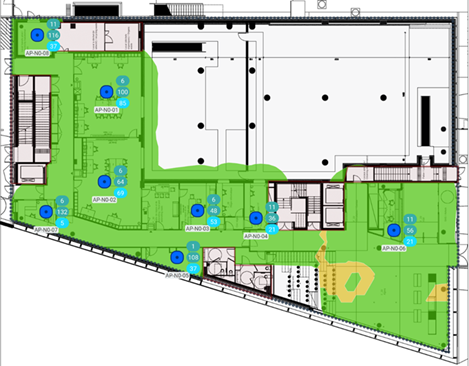
|
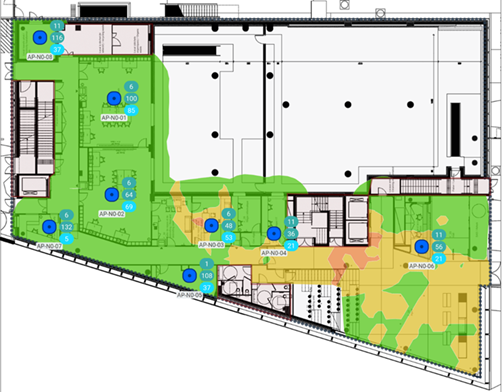
|
| 1st floor |
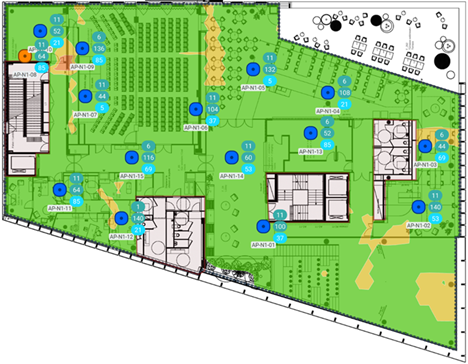
|
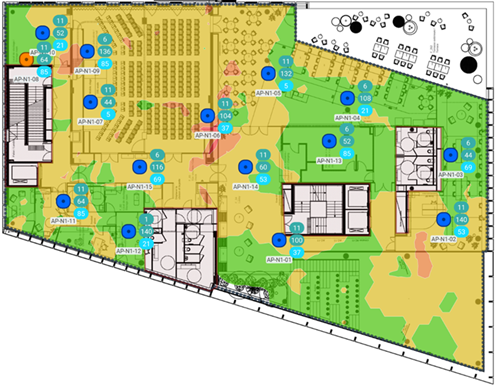
|
| 2nd floor |
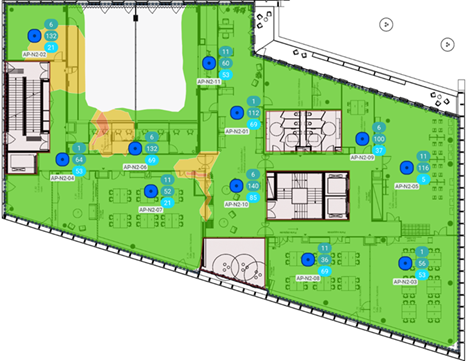
|
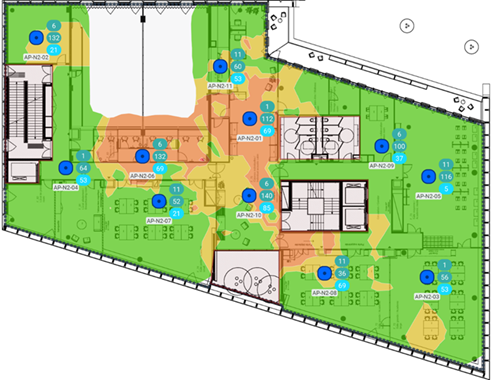
|
| 3rd floor |
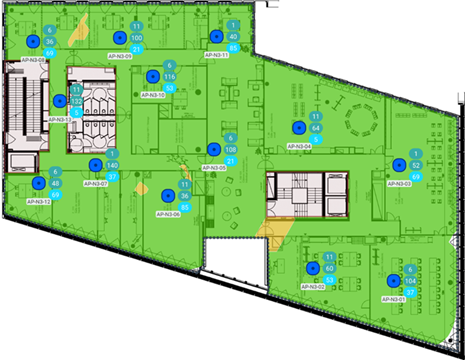
|
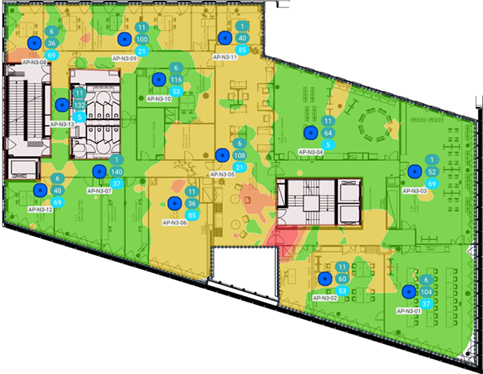
|
EDIT 13th November 2024:
Someone in the wireless community reached out to me and asked if I had done some modeling with 80 MHz channels. I hadn’t, mainly because I honestly don’t consider it a feasible option. But the question still piqued my interest, so why not look into it and see how bad it gets? Let’s dive in!
I could not change the channel plan on the controller, let it run for a few days and do another post-validation survey all over again. So we are going a different route: let’s take the same survey data and use Ekahau channel planner capabilities to switch to 80 MHz wide channels on 6GHz.
However, this method comes with an important caveat. Because Ekahau uses actual survey data points I gathered across all the floors, it has a much better understanding of the overall RF environment than the controller. Indeed, the controller can only rely on AP-to-AP neighbor information for its RRM algorithm and does not have this ‘holistic’ view. As a result, Ekahau provides a better channel plan and is able to further limit CCI.
Knowing this, let’s run the channel plan simulation on Ekahau and compare CCI in this best case scenario.
CCI comparison
using actual measurements with Cisco RRM vs Ekahau channel plan
| Floor | 6 GHz band 40MHz channels Cisco RRM | 6 GHz band 40MHz channels Ekahau channel plan | 6 GHz band 80MHz channels Ekahau channel plan |
|---|---|---|---|
| Ground floor |

|
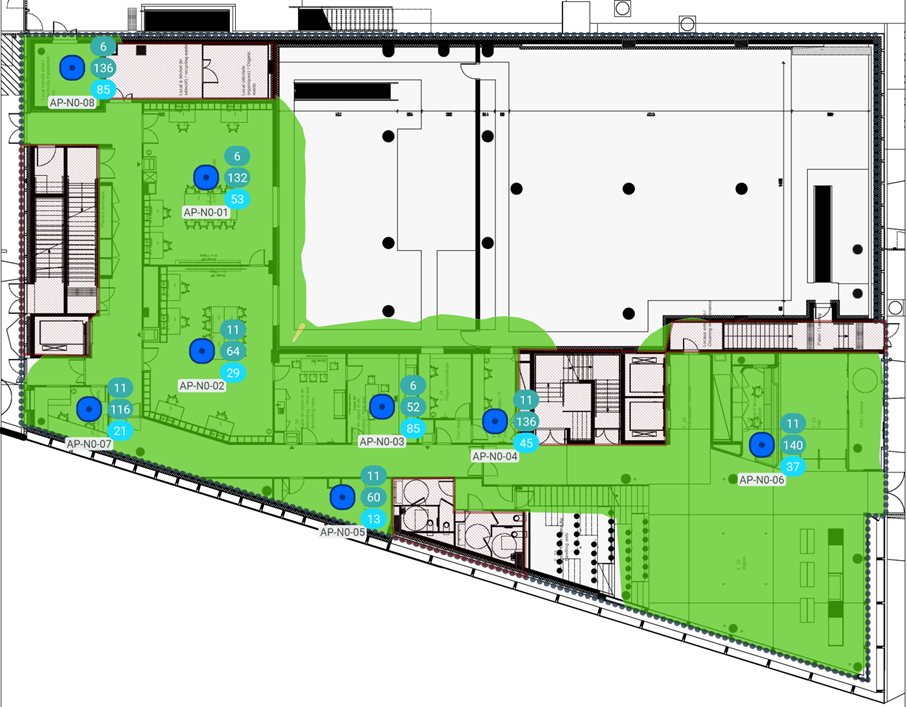
|
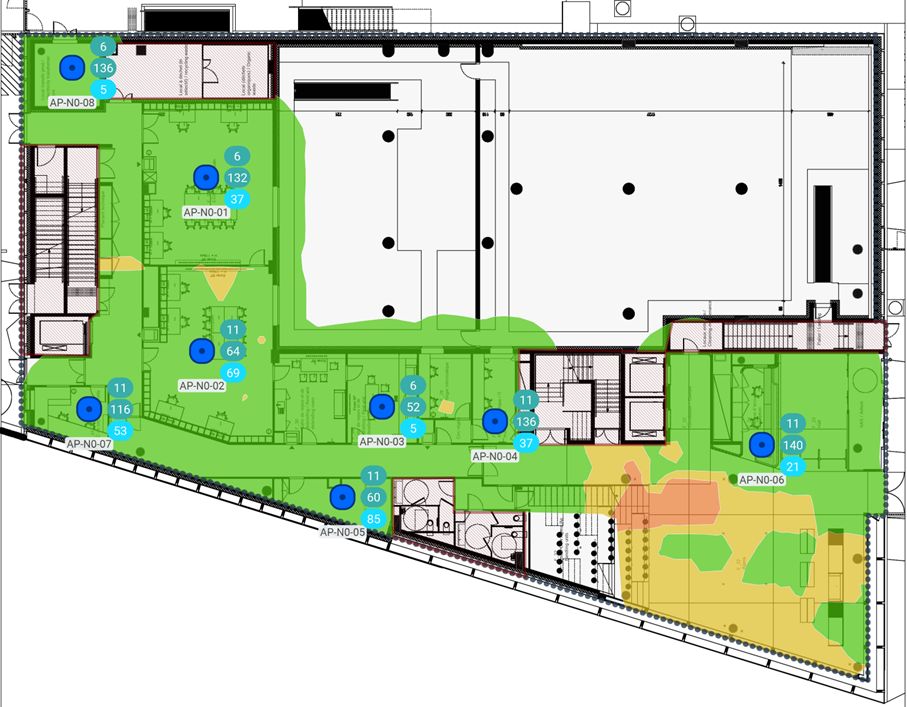
|
| 1st floor |

|
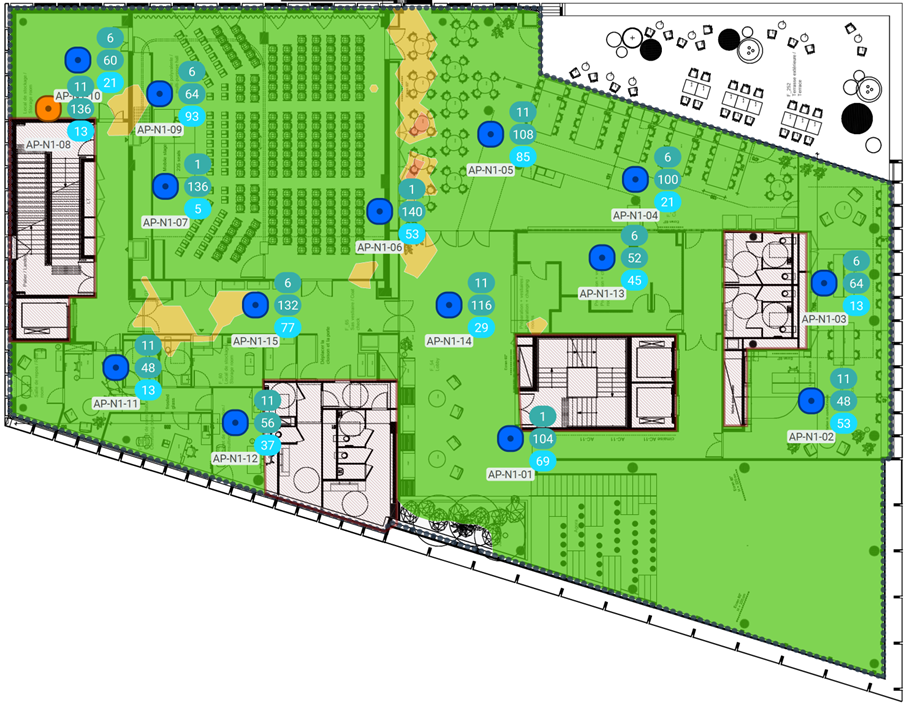
|
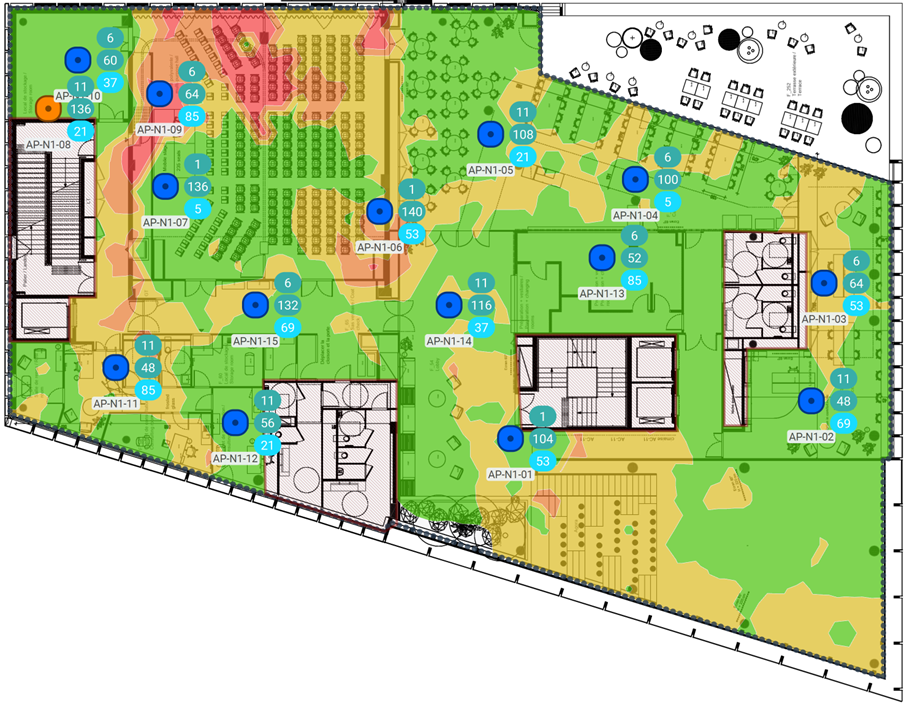
|
| 2nd floor |

|
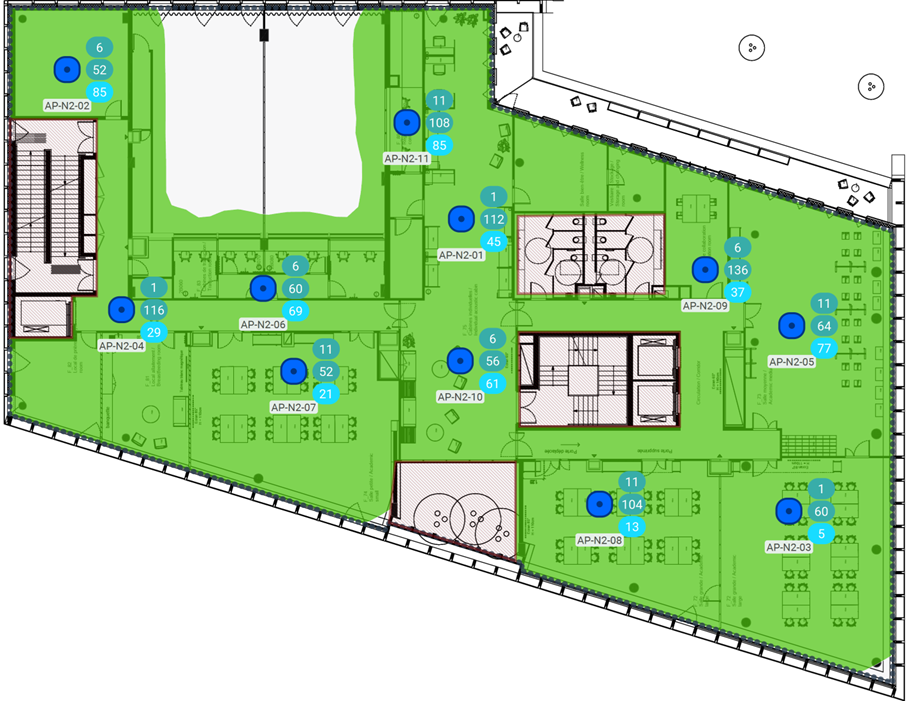
|
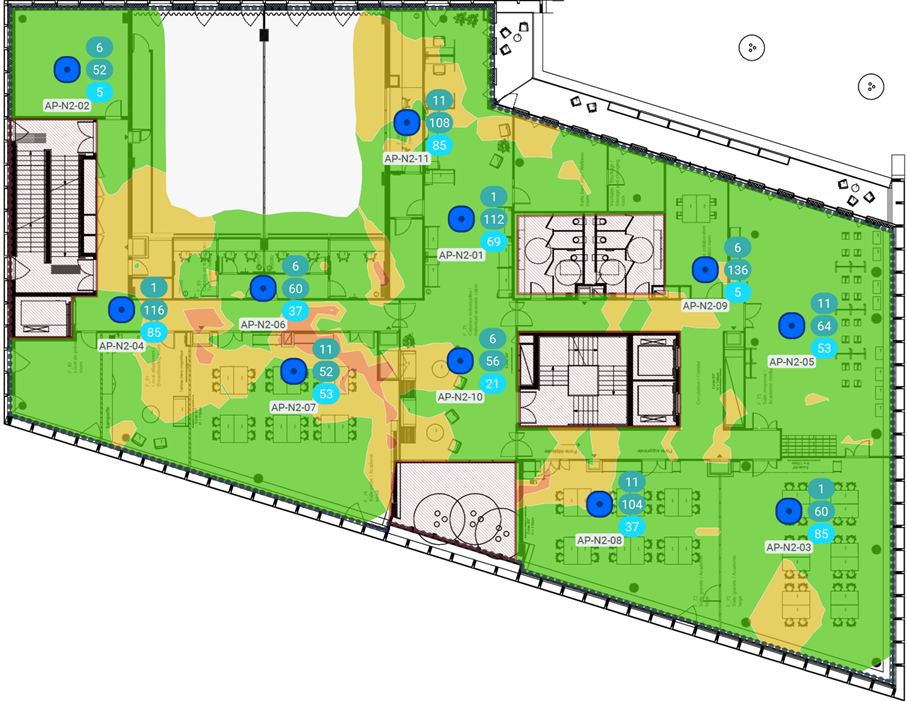
|
| 3rd floor |

|
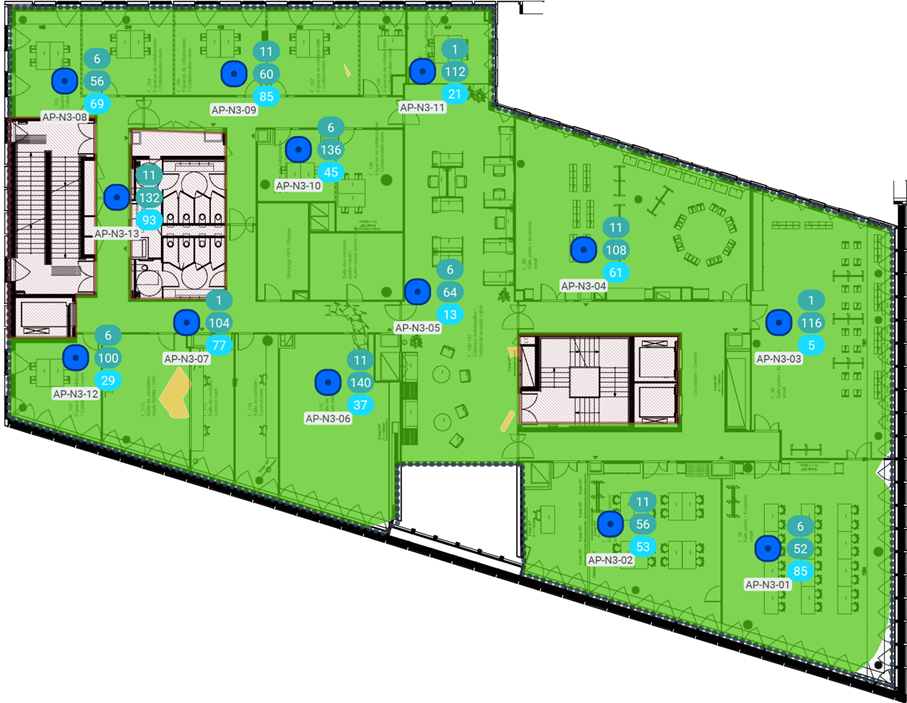
|
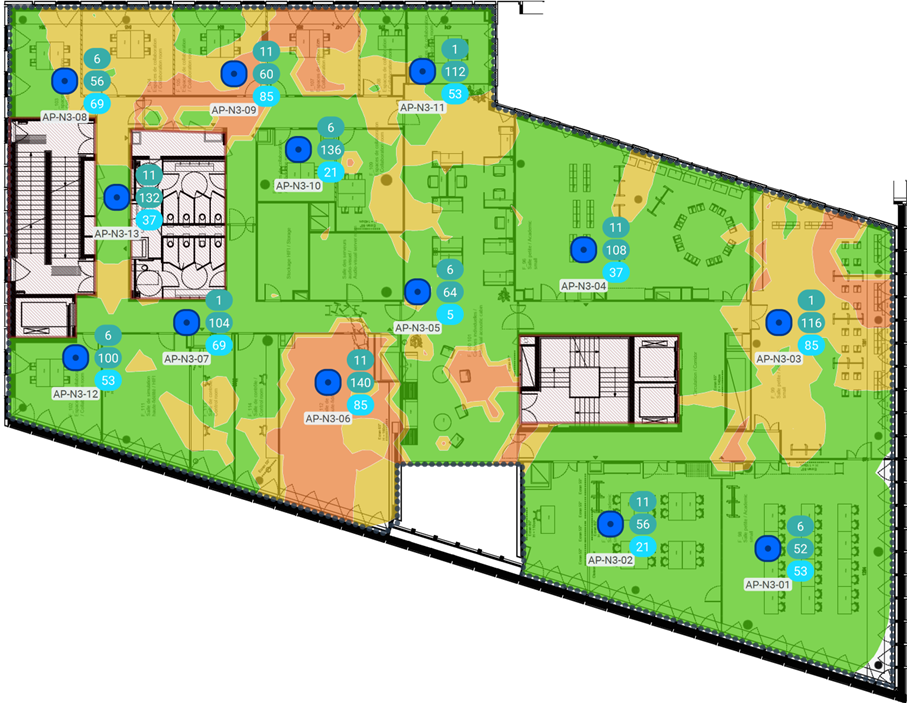
|
Even with the best possible channel plan provided by Ekahau, we are definitely going to experience CCI on 6 GHz if we use 80 MHz channels (see the last column of the table). 40 MHz channels might look like a good option (see the 2nd column) when you are doing your simulation, but keep in mind your RRM algorithm is probably not going to be as good as Ekahau and you will most certainly have CCI (see the 1st column).
What would it be like if we had access to the remaining 6 GHz spectrum in Europe? For this specific deployment, increasing from 6 to 14 80 MHz channels would yield results similar to those on the 5 GHz band (16 available channels), with almost no CCI. This would make 80 MHz channels a viable solution! And if you want to play it safe, you can always go with 40 MHz and be certain that CCI won’t be an issue.
